Author: ETH Global
Compiled by: Felix, PANews
Summary: 10 projects involving wallets, AI, Blinks, DeFi, and other fields.
One of the peripheral events of EthCC, the ETHGlobal Brussels hackathon, came to a close from July 12th to July 14th, with 355 projects participating. Ultimately, 10 projects stood out and made it to the finals (sharing a total of $475,000 in prizes). These projects cover areas such as DeFi, wallets, AI, and Blinks. This article takes you through these 10 projects.
BananaBets (Betting Platform)
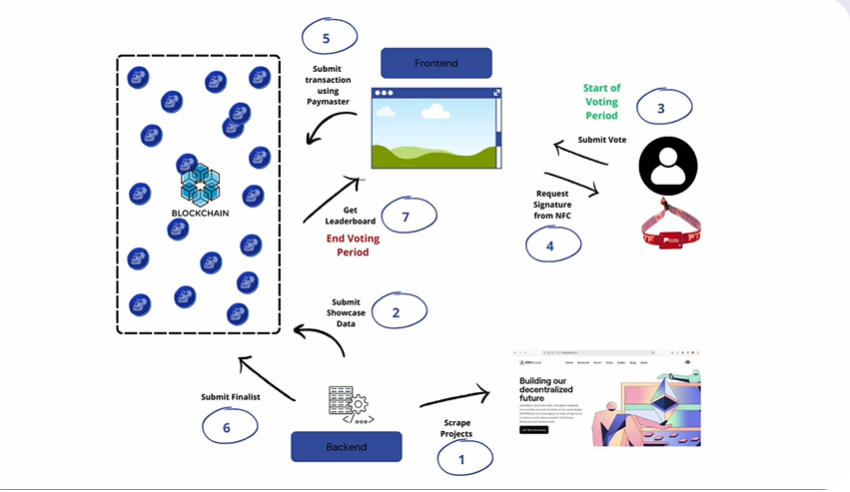
BananaBets is a betting platform where ETHGlobal participants can use NFC wristbands to log in and predict winners based on displayed data.
Each bettor can bet through the front end on projects they believe will make it to the finals. After the results are announced, incorrect bets will result in negative points, while correct bets will earn positive points. A leaderboard will be generated, and the person with the highest score will win 100 USDC.
How it works:
- The backend of BananaBets fetches ETHGlobal Brussels projects from the ETHGlobal website.
- Each project is assigned a unique ID by the backend, and all IDs are submitted to the ApeChain testnet's smart contract.
- The backend initiates the voting phase by calling the contract. Users can access the BananaBets website, select the projects they believe will be selected as finalists, and then click "Submit Vote."
- To ensure that users are ETHGlobal Brussels participants and to ensure smooth logins, the system prompts users to scan their NFC wristbands with their phones. The NFC wristband will sign a message containing the voting data collected in step 3.
- The signed message is sent to the backend, and the simulated payer will package the message in a transaction object and submit it to the contract.
- As the announcement of the finalists approaches, the backend will close the voting by calling the contract. After the list of finalists is announced, the IDs of the selected projects will be submitted to the contract in the form of an array.
- Based on the accuracy of the votes, when the getLeaderboard contract function is called, each user will receive a certain number of points. Then, the leaderboard will be displayed on the website.
Cook Some Hooks (AI+DeFi)
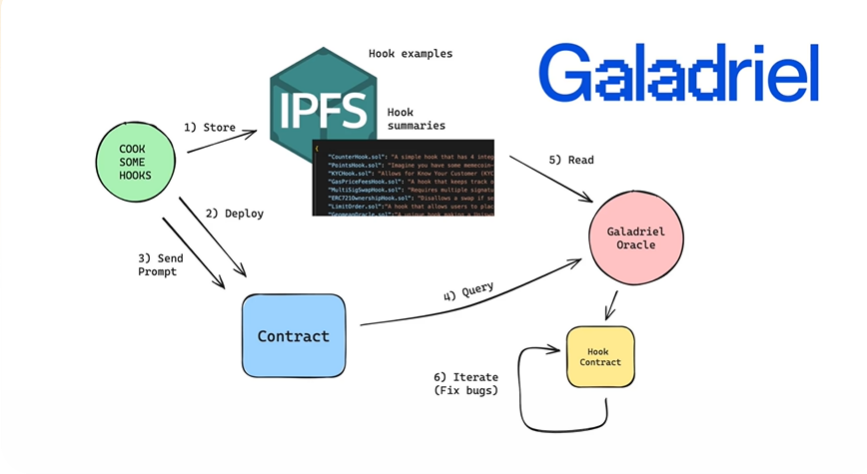
Cook Some Hooks is a tool that allows users to create and deploy Uniswap v4 hooks using generative AI.
Users can choose their favorite DeFi dApp (such as Uniswap or PancakeSwap), select the currency pair they want to create a pool for, and then use the LLM model to generate hooks. The generated hooks can be deployed on any EVM-compatible chain.
The front end of Cook Some Hooks is built using React and uses a state management library to handle user input and interaction. The backend interacts with various APIs and handles the deployment of hooks on EVM chains.
Zarathustra (AI Q&A)
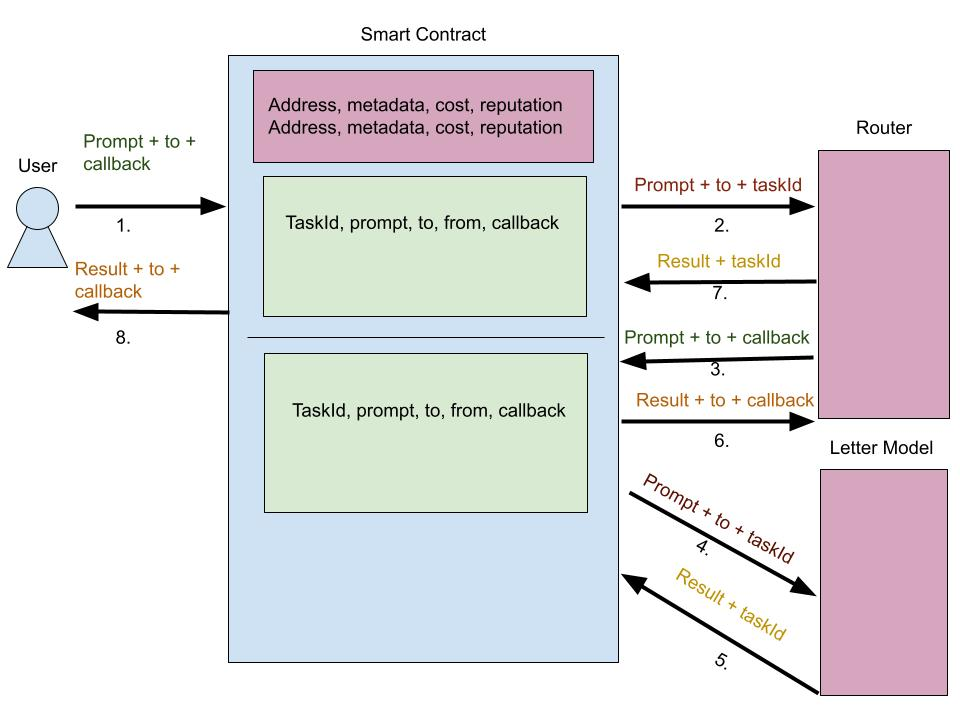
Zarathustra is a distributed, modular, permissionless AI reasoning network that uses highly specialized model execution to perform off-chain computations and coordinate responses to user queries.
Zarathustra consists of three main participants: users, routers, and models. These participants are all coordinated through smart contracts. Anyone can join these roles without permission.
Users submit queries through the front-end interface, such as "How many 'r's are there in the word 'strawberry'?" They submit the query to the smart contract, which processes and broadcasts the event emission. This event emission is received by the "router." The router is a sophisticated large language model (LLM) responsible for analyzing the query to determine its nature and the task required. Based on the analysis, the router assigns the task to the appropriate specialized model.
However, in some cases, the query may be complex and sequential. In such cases, the router coordinates available models based on the reputation and description of the models. The router can prompt models with any query and can even prompt other more specialized routers. The process behind this routing is facilitated by smart contracts, adding a layer of trustless interaction to facilitate interactions between intelligent agents. Additionally, data between agents and users is enhanced on-chain using Filecoin and decentralized data solutions for compression, payments, and rewards.
Once the appropriate model completes the task, the router sends the final output back to the smart contract, which broadcasts the answer to the front end.
TapEther (Wallet)
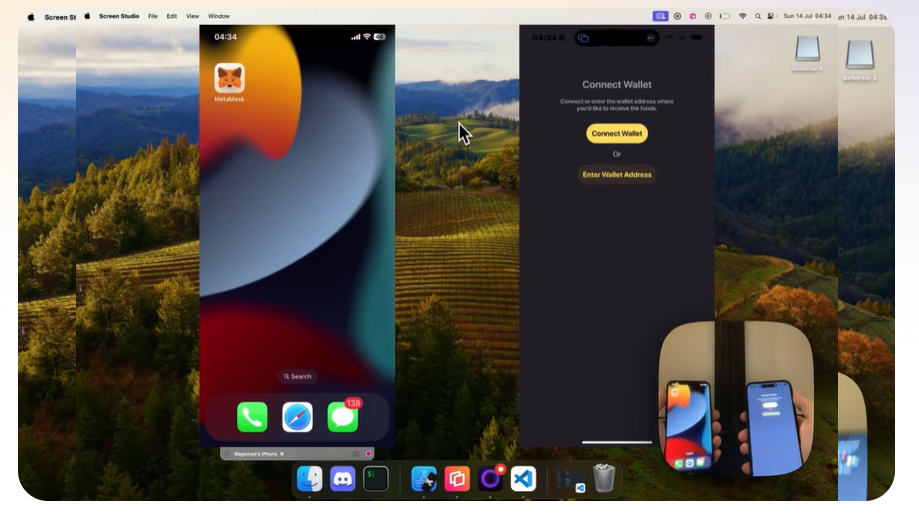
Tap Ether is a simple application that allows users to send encrypted assets to someone by tapping their phone. Tap Ether is built using React Native and utilizes NFC technology, which allows devices to communicate when in close proximity.
To use Tap Ether, the recipient of the encrypted assets needs to input their wallet address or connect their wallet. The sender then taps their phone near the recipient's phone to connect their wallets. The recipient specifies the amount, requests a signature, and waits for the transaction to be signed.
This project is built using React Native and Expo and leverages several advanced features, including Ethereum Name Service (ENS), WalletConnect, and 1Inch balance API.
Oh Snap! (Security)
Oh Snap! provides background information about contracts before transactions. The background information can show whether the contract is malicious or provide other relevant information. The displayed content is based on comments linked to addresses and voted on by the community. The voting logic is a slightly simplified version of Vitalik's Community Notes algorithm blog post.
Chain Notes provides background information about contracts before transactions. The background information can show whether the contract is malicious or safe, or provide other insightful information. The displayed content is based on comments linked to addresses and voted on by the community. The voting logic is a slightly simplified version of the Twitter/X voting algorithm Community Notes.
OmmaCash (Wallet)
Omma Cash aims to enable non-Web3 users to use their familiar application, Whatsapp, to use cryptocurrencies.
All user experiences are conducted through Whatsapp, while all technical and on-chain transactions run in the background, allowing users to seamlessly send and receive funds, whether in cryptocurrency or fiat currency.
Omma Cash is using Circle's API to develop a programmable wallet, so users do not have to create their own wallets. Omma Cash is built on top of their smart contract so that users can send USDC to any available chain and their Cross-Chain Transfer Protocol (CCTP).
Piggy Wallet (Savings App)
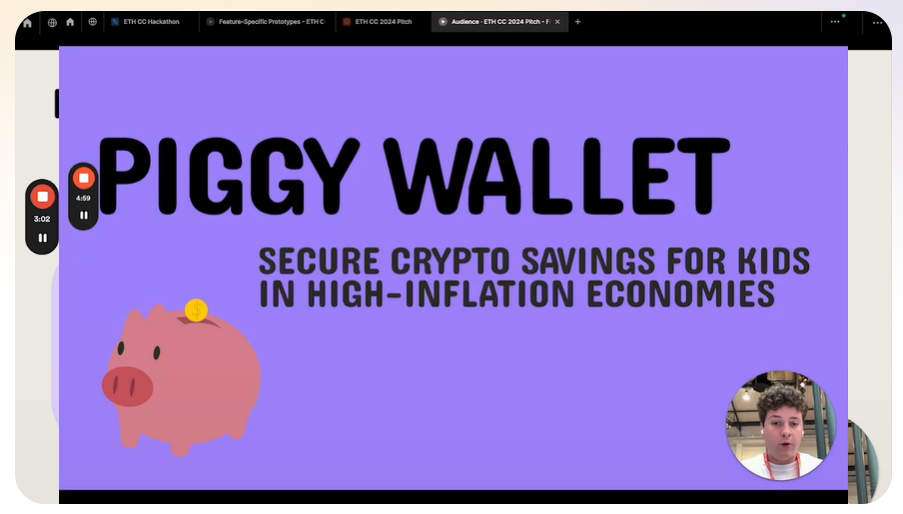
Piggy Wallet is a children's encrypted savings app that includes features such as setting time locks, automatic conversion to USDC, savings goals, task rewards, AI advisor, and parental controls.
Key features:
Easy Creation of Smart Wallets: Both parents and children can register through simple email registration, without the need for complex wallet setup or knowledge of encryption technology. A secure, blockchain-based account accessible through a user-friendly interface.
Age-Adaptive Savings Lock: Savings are automatically locked until the child reaches 18 years old; parents have the option to make early withdrawals in emergency situations.
Smart Fund Management: Automatically convert any received cryptocurrency into USDC stablecoin to prevent currency devaluation; deposit funds via QR codes and shareable payment links.
Personalized Savings Goals: Create multiple savings goals (e.g., "New Bike," "College Fund"); intelligently allocate incoming funds between different goals; track and visualize progress in real-time.
Task Reward System: Parents set tasks with related cryptocurrency rewards; children earn additional savings by completing chores or tasks.
AI Financial Advisor "Piggy Bot": Personalized financial education tailored to the child's age; interactive communication through text and audio; covers traditional finance and cryptocurrency; adjust complexity and content based on the child's age.
Family Financial Dashboard: Comprehensive view of all family members' savings and goals; promotes transparency and collaborative financial planning.
AdFHE (Personalized Advertising)
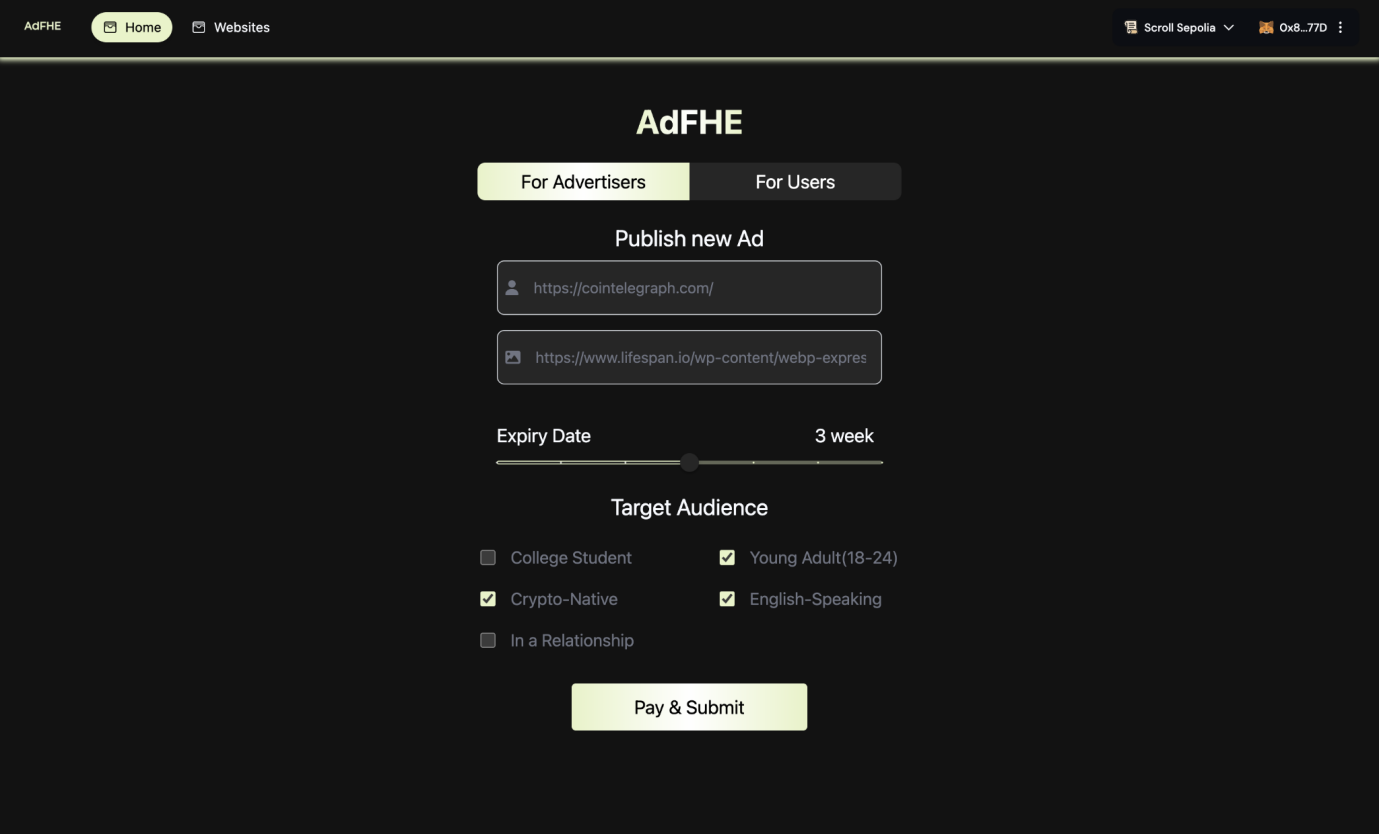
AdFHE is a personalized advertising protocol based on Fully Homomorphic Encryption (FHE). This technology allows computations on encrypted data without decryption. This means that AdFHE can securely analyze user characteristics and preferences while ensuring privacy throughout the process.
Similar to leading search engines and social media platforms providing tailored content without revealing personal information, AdFHE leverages recommendation algorithms. The algorithm processes encrypted user data, enabling the platform to provide targeted advertising while protecting personal search history and information.
Advertisers register using email through Dynamic and pay fees based on the active time of their ads on Scroll and Zircuit. As Scroll has high liquidity and Zircuit utilizes zkSNARKs for state verification in ZK-rollup, all the data required for proof construction is published on the Ethereum L1 and then transmitted to Fhenix through cross-chain messaging via Hyperlane.
When users input data into the protocol (similar to how Google collects information based on searches), the data is encrypted and stored in the contract. When users visit web pages using the advertising protocol, the on-chain matrix matches ads with the user's encrypted personal data.
AdFHE uses decentralized subgraph filtering of advertising data deployed by The Graph.
Ephi (Blinks)
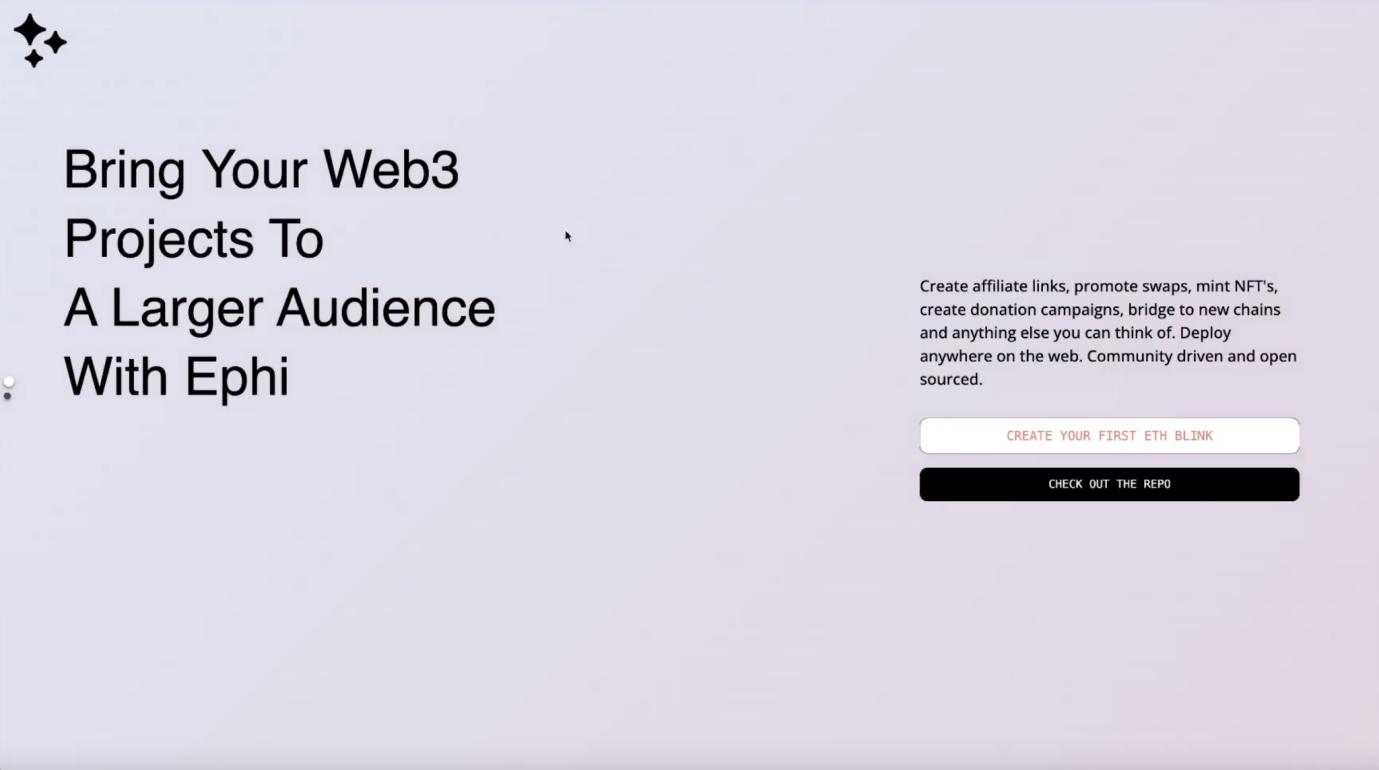
Ephi is a Blinks application that brings Web3 into web2 by embedding mini-window versions on Web2 pages through a browser extension. Users can perform Web3 operations, such as transactions, directly from Web2 platforms using IPFS.
Inspired by Solana Actions and Blinks, as well as Forecaster Frames, Ephi creates a browser extension that supports embedding mini-window versions anywhere on web pages. The Phi plugin can interpret special bLINKs anywhere on the web and present dynamic HTML context windows. During this hackathon, Ephi built three different blink examples, including bridging, donations, and exchanges.
Individuum (Task Automation Marketplace)
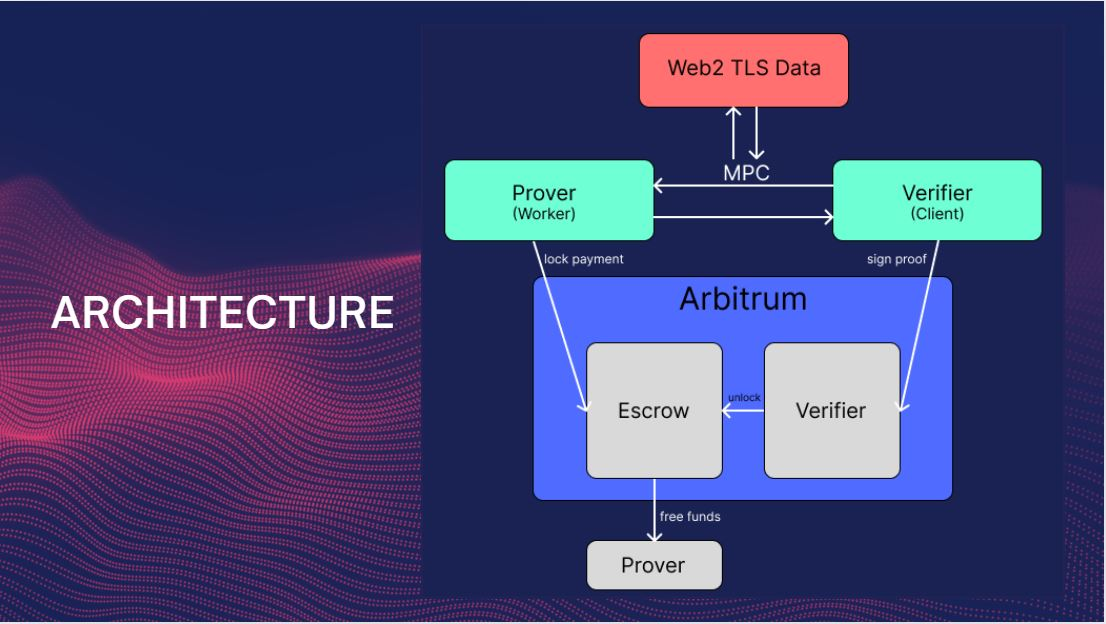
Individuum is a network task automation marketplace that guarantees task completion as requested and ensures transparent and secure payments.
Clients can list their network tasks or delegate them to a party willing to share tasks. This includes providing clear instructions, outlining specific requirements, and setting a fixed price for each task. The platform then matches the task with workers capable of efficiently completing it.
One of Individuum's main advantages is its guarantee of task completion requirements. Throughout the transaction process, the comprehensive payment system provides assurance for both parties. The person posting the task must lock tokens, and once the task is completed, the person completing the task will automatically receive the tokens. With this system, neither party can cheat.
To achieve a seamless login/registration process, Individuum uses Web3Auth. To obtain Web2 TLS data, Individuum uses TLS Notary and its integrated MPC to define task outlines. Smart contracts, including validators and escrow contracts, are made using Arbitrum Stylus. The backend is built using Rust, and the frontend is built using Next.js.
Related reading: A Quick Look at the 7 Projects that Made it to the ETHGlobal StarkHack Finals
免责声明:本文章仅代表作者个人观点,不代表本平台的立场和观点。本文章仅供信息分享,不构成对任何人的任何投资建议。用户与作者之间的任何争议,与本平台无关。如网页中刊载的文章或图片涉及侵权,请提供相关的权利证明和身份证明发送邮件到support@aicoin.com,本平台相关工作人员将会进行核查。




